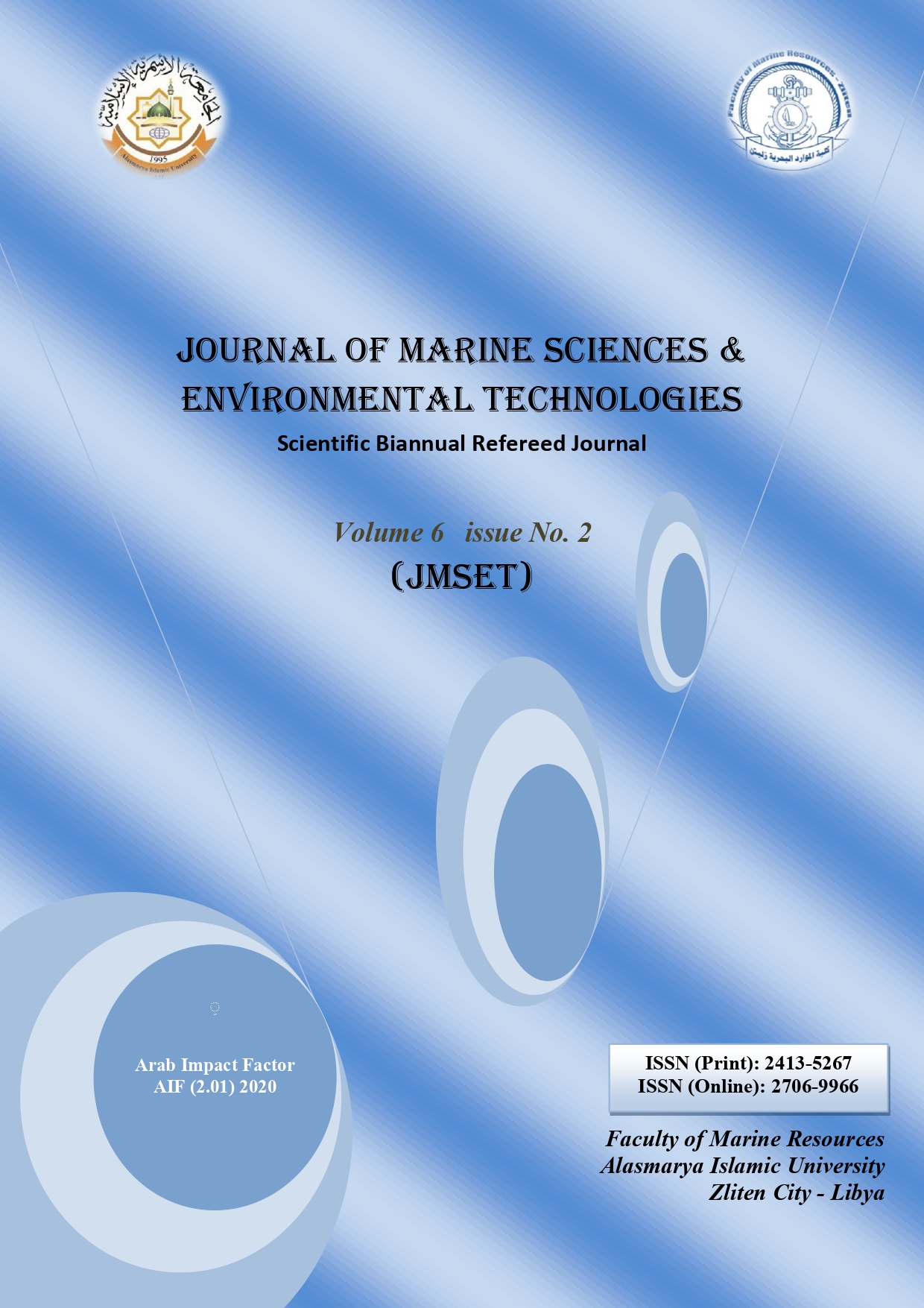Estimation of Adsorption Isotherm for Iron Ion on Three Different Active Carbon Types
DOI:
https://doi.org/10.59743/jmset.v6i2.36Keywords:
Activated carbon, Adsorption, Charcoal, Date stone, Iron ions, MarketAbstract
The purpose of this experimental study is to estimate a suitable isotherm for the adsorption of iron ions from an aqueous solution onto three different types of active carbon. Three types of active carbons were selected, they include granular activated carbon prepared from date stone (GACD), granular active carbon prepared from charcoal (GACCH), and granular active carbon bought from the market (GACM) used for home desalination unit. The experiments were performed in a batch system at a constant temperature 20 oC and pH 7. Iron solutions of different concentrations were prepared from ferrous chloride. At equilibrium, linear forms of Langmuir isotherm, Freundlich isotherm, Timken isotherm, Dubinin-Radushkevich isotherm, and Elovich isotherm were tested with adsorption data to find the best-fit model. Freundlich and Langmuir were found to be good model for GACM, Freundlich isotherm was good model for GACCH and Langmuir isotherm best fits experimental data for GACD.
Downloads
References
Alshuiref A.A., Ibrahim H.G., Ben Mahmoud M.M., and Maraie A.A. (2017). Treatment of Wastewater Contaminated with Cu(II) by Adsorption onto Acacia Activated Carbon. Journal of Marine Sciences & Environmental Technologies, 3(2):25-36.
Dubinin M.M. (1960). The potential theory of adsorption of gases and vapors for adsorbents with energetically non-uniform surface. Chem. Rev., 60: 235–266.
Elovich S.Y., and Larinov O.G.(1962). Theory of adsorption from solutions of non-electrolytes on solid (I) equation adsorption from solutions and the analysis of its simplest form, (II) verification of the equation of adsorption isotherm from solutions. Izv. Akad. Nauk. SSSR, Otd. Khim. Nauk., 2: 209–216.
Farouq R., and Yousef N. S. (2015). Equilibrium and Kinetics Studies of adsorption of Copper (II) Ions on Natural Biosorbent. International Journal of Chemical Engineering and Applications, 6(5): 319-324.
Hamdaouia O., and Naffrechoux E. (2007). Modeling of adsorption isotherms of phenol and chlorophenols onto granular activated carbon Part I. Two-parameter models and equations allowing determination of thermodynamic parameters. J. Hazard. Mater., 147(1): 381-394.
John Thomas W., and Crittenden B. (1998). Adsorption Technology and Design, 1st ed. Oxford: Butterworth-Heinemann, UK
Lau L.C., MohamadNor N., Lee K.T., and Mohamed A.R. (2016). Adsorption isotherm, kinetic, thermodynamic and breakthrough curve models of H2S removal using CeO2/NaOH/PSAC. International journal of petrochemical science and engineering, 1(2): 1-10.
Parmar M., andThakur L.S. (2013). Heavy metal Cu, Ni and Zn: Toxicity, health hazards and their removal techniques by low cost adsorbents: A short overview. Int. J. Plant. Anim. Environ. Sci., 3(3): 143-157.
Richardson J.F., Harker J.H., and Backhurst J.R. (2002). Coulson and Richardson’s Chemical Engineering, 5th ed. Vol.(2), Oxford: Butterworth-Heinemann, UK.
Tempkin M.I., and Pyzhev V. (1940). Kinetics of ammonia synthesis on promoted iron catalyst. Acta Phys. Chim., 12: 327–356.
Yahia A. Alhamed. (2006), Activated Carbon from Dates' Stone by ZnCl2 Activation, JKAU: Eng. Sci., 17(2): 75–100.
Downloads
Published
Issue
Section
License
Copyright (c) 2020 Journal of Marine Sciences and Environmental Technologies

This work is licensed under a Creative Commons Attribution 4.0 International License.









